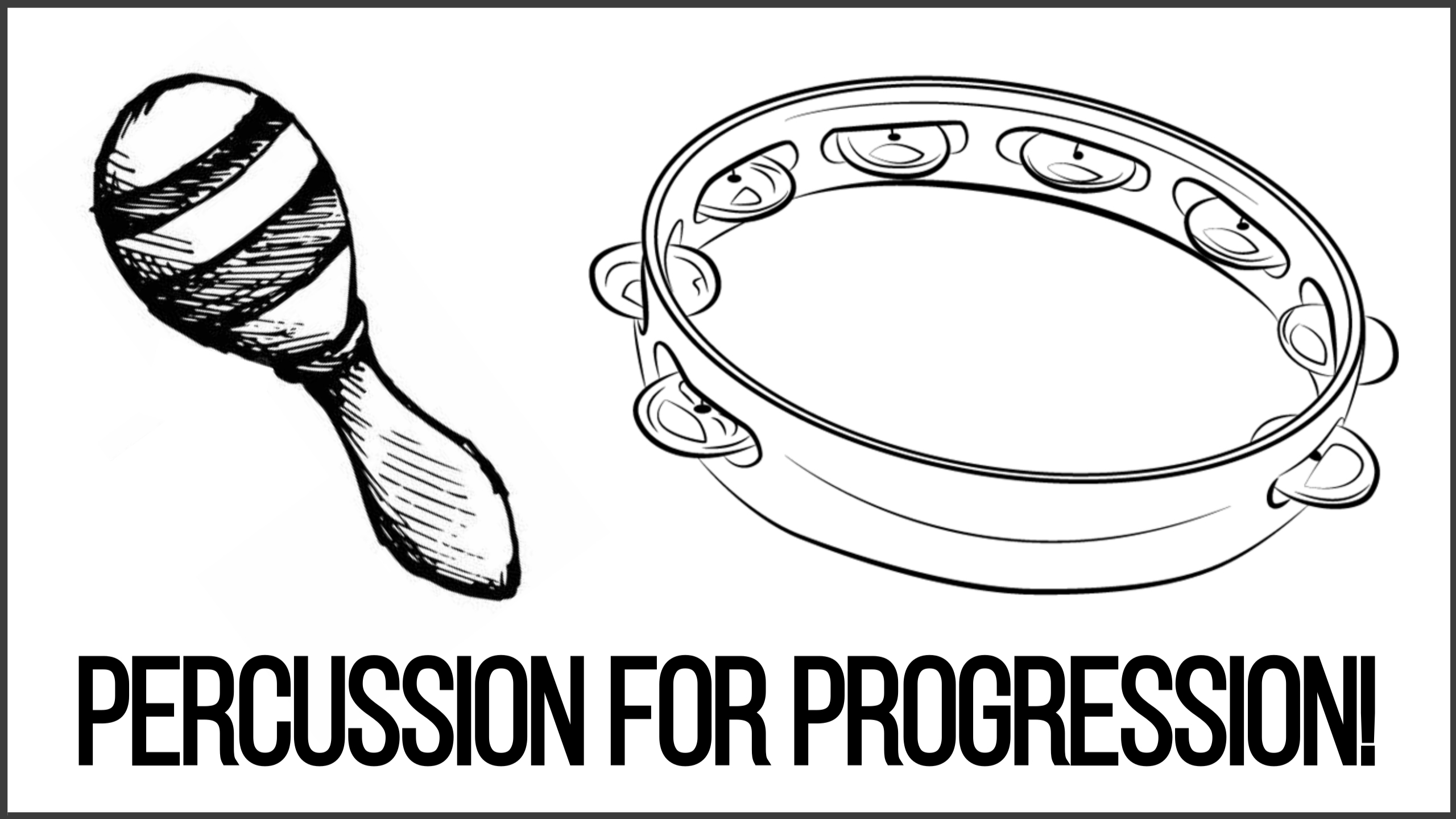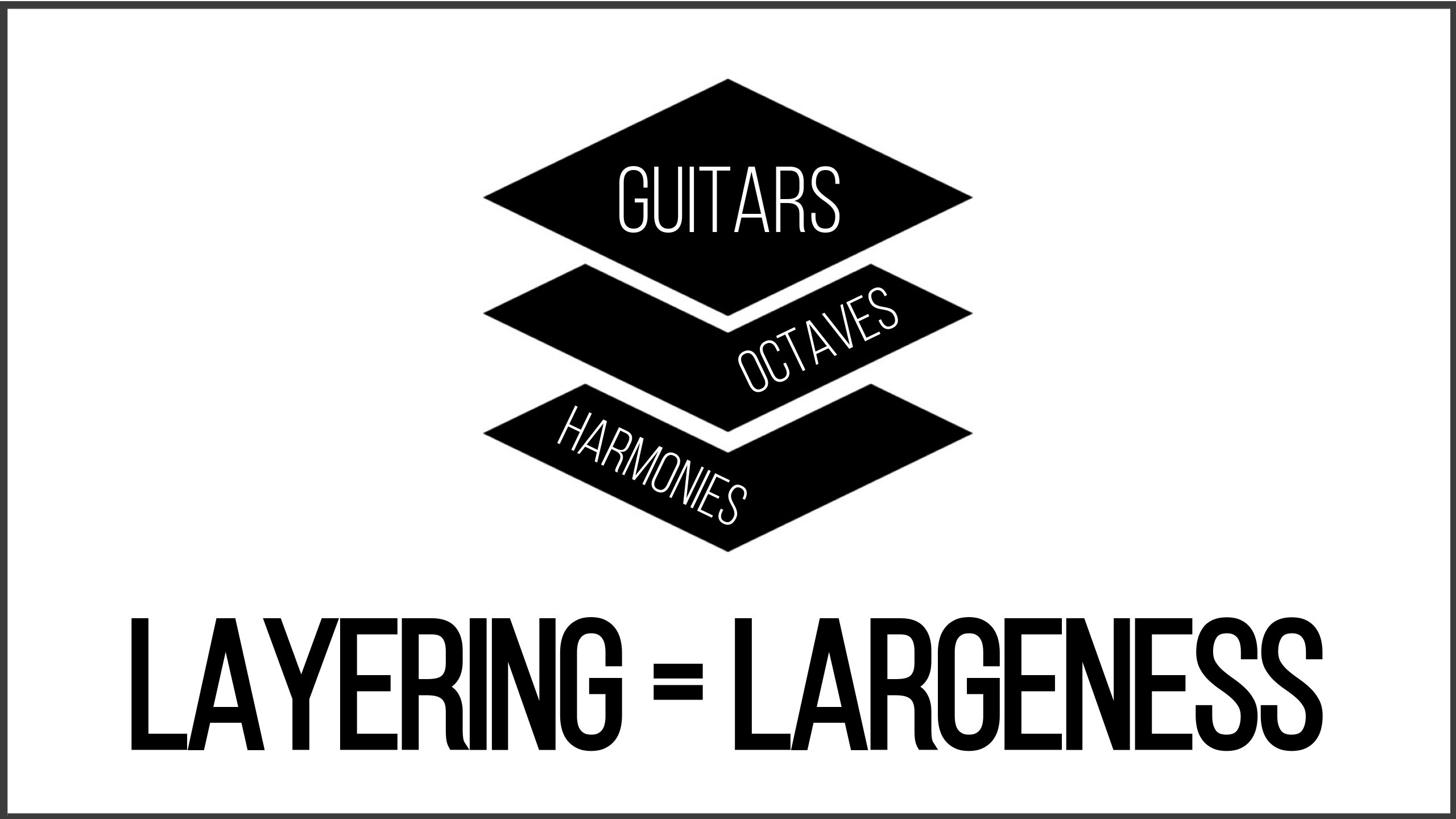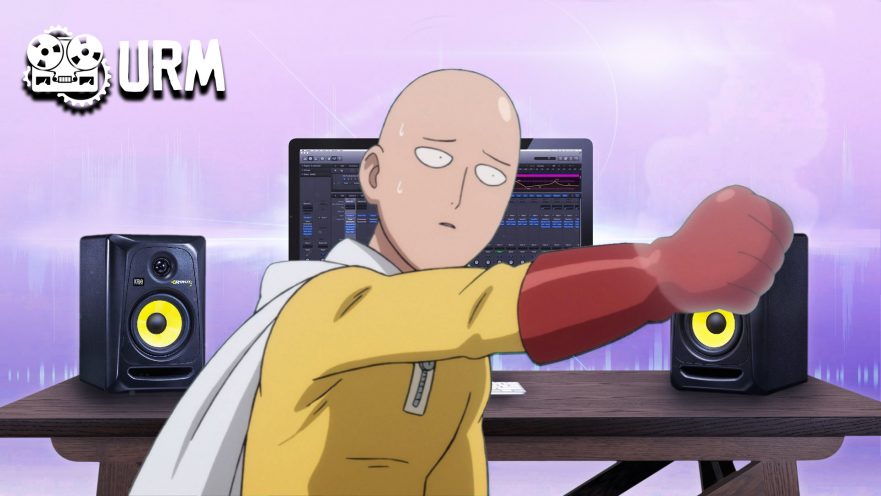| By Thomas Brett |
Ever listened to a track which starts out strong but doesn’t seem to get any bigger, eventually causing you to lose interest?
I know I have… and it’s disappointing!
I can’t tell you how many times I’ve resorted to pressing the skip button midway through a new track that had potential based on the fact that it’s beginning to get boring or “same-y” – Probably not a great way of securing fans that’ll return to your music again in the future…
It’s important to remember that “well-arranged” isn’t just about the instrumentation, but also about creating an evolving experience with ups, downs, highs and lows which will all help towards keeping listeners engaged!
Want to avoid people falling asleep during your tracks?
Here are 3 tips for adding that extra “wow factor” that’ll help people stay awake:
1 – ADD SOME PERCUSSION

Percussive instruments such as shakers and tambourines are often looked-down-upon and ridiculed within the rock and metal communities, while in reality, these elements can be extremely useful tools for drastically improving the feel of a mix!
Here are a few tips on using percussion effectively in a mix:
- Placing your percussive instruments strategically within the stereo field can go a long way: Panning a shaker and tambourine on opposite sides of the L/R field is often a good idea for reducing masking, and can also help widen your stereo image.
- It’s also worth taking your drum panning into account when choosing where to put your percussion. If there’s a section where a “high-end-y” cymbal like the Hi-Hat or Ride is keeping time, I’ll often pan the tambourine to the opposite side of said element in order to reduce clashing and add some extra rhythmic interplay between sides.
- Don’t go all-out too early on: Introducing each percussive element in stages throughout the duration of the song is the key to making the most out of the added “lift” and “groove” they can provide. Having all of your percussive elements playing 16th note grooves at full blast at the very beginning of the song means you’ve got nowhere left to go and have probably peaked too early on…
- Utilise the “timbre” of your percussion wisely: I’ll often opt for using shakers earlier on in a track and saving my tambourines for the later sections. The reason? The fact that tambourines have more “high-end presence” than shakers means they’re great for adding that final push of “impressiveness” in a big solo or outro section!
- Make the most of your percussion: Although it’ll usually do the trick just fine, you don’t always have to opt for the most basic/obvious grooves. Coming up with interesting patterns that interact and “syncopate” with your pre-existing drums can often help push a “good” song into the realm of “excellent”.
- All of this being said, not every song calls for percussion: Make sure you’re only adding in these elements if it aids the track, and not just for the sake of it!
Still not convinced? Let’s take a look at an example of awesome percussion in a modern Rock/Metal track:
Mastodon’s recent single “Show Yourself” is a great example of the concepts and techniques I’ve mentioned above being put to great use:
https://www.youtube.com/watch?v=gUGda7GdZPQ
Here are some observations on the use of percussion in “Show Yourself”:
- There’s an 8th note shaker throughout the first verse which adds a great rhythmic drive in combination with the drums.
- The same 8th note shaker pattern continues in the 2nd verse & chorus, with the addition of a quarter note tambourine accenting the downbeats alongside the snare. The tambourine adds some nice high-end content to the rather dark and “vintage” sounding drum tones and conveys a certain sense of contrast and “growth” compared to the 1st verse.
- An accented 16th note tambourine pattern appears at some point in the solo section, which really helps provide a boost in energy due to its’ high-end nature and “urgency” of the groove.
- They pull out all the stops in the outro of the track with a tambourine and (seemingly higher-pitched) shaker playing accented 16th note patterns simultaneously throughout the duration of the section.
My One-Sentence Conclusion On Percussion: It can sound really awesome when put to good use, even in heavy metal!
2 – TRY SOME LAYERING

NOTE: In this case, I’m primarily talking about electric guitars.
Although the classic metal mix format of a single pair of double-tracked Left/Right guitars will often do the trick, recording additional layers to “beef-up” or “lift” certain sections can really aid the overall flow of a track.
Here are a few guitar layering ideas to try out in your next production:
- Octave Guitars: Try recording duplicates of your main rhythm guitars an octave lower or higher (depending on genre and what the part calls for) and subtly blending them in under your original tracks for added impact in choruses or an outro.
- The fact that your separately-tracked octaves won’t be perfectly in sync with your regular guitars is a positive, as the subtle differences between takes will make for a bigger sound when played back simultaneously.
- You can also experiment with pitch-shifting effects and hardware pedals to achieve similar results, but be careful not to overuse them as the results can end up sounding rather fake due to the lack of subtleties discussed above.
- Layering Lead Guitars: Rather than just relying on a pair of rhythm guitars to carry the entirety of the song, I’ll often try to layer them with some tasty lead lines in order to help compliment and add definition to certain sections where viable.
NOTE: Check out this video, in which session guitar legend Tim Pierce gives some valuable tips on layering guitar parts:
https://www.youtube.com/watch?v=3cCJlb-dfkg
- Similarly to what I talked about during the percussion section, it’s important not to go too big too early on and make sure you’re not shooting yourself in the foot by putting all of your eggs in the same basket…
- Don’t go adding multiple layers of guitars in every section just because you can. Learn to save things for later and strategically plan out the instrumentation within your song for maximum impact and interest throughout!
NOTE: The techniques I’ve talked about above can also apply to layering vocal tracks. Check out these great tips by EDM Producer Tim Maxx for more info on layering vocals effectively:
https://www.youtube.com/watch?v=oQIYey-I-is
https://www.youtube.com/watch?v=e9jJD1u5558
3 – FUN WITH FILTERS

Filters aren’t just for getting rid of high-end guitar fizz or tightening up low-end… They’re also an extremely effective tool for adding a sense of tonal contrast between sections of your mix and creating unique FX!
Here are a few filtering tricks for you to try out in your next project:
- Create Some Contrast: Aside from the fact that they’re cool, another reason why low-bandwidth Lo-Fi fx tend to work well in certain sections of songs is the fact that they make the full-range sections which come directly after them sound that much more impressive.
NOTE: An excellent example of the contrast effect I’m talking about can be heard between the intro & first verse of Blessthefall’s “Hollow Bodies” (Mixed By Joey Sturgis):
https://www.youtube.com/watch?v=SDDn4Kh65M
- This is primarily based on the fact that our ears adjust based on what they’re hearing and accept it as the norm. Meaning that people will start to get used to the way a Lo-Fi intro sounds, only to have their minds blown when the highs and lows are re-introduced when the verse hits.
NOTE: This is also a great reminder of why it’s important to reference while mixing. A mix you’ve been working without referencing might sound “full and bright” to you, but actually sound dull and thin when played alongside a pro commercial mix.
- This same concept can also be used subtly across the master buss: Try automating an EQ which filters out some of the ultra-highs and ultra-lows from your mix during the verses and reintroduces them during the choruses. Famous pop Mixer “Serban Ghenea” (Katy Perry, Taylor Swift, The Weeknd) has been known to use this technique to give his mixes some additional depth and impact on a section-by-section basis.
- Try it in mid/side mode: You can take the concept of tweaking the overall frequency bandwidth of your mix even further by “focusing” the effect with an m/s EQ. Ex. Try darkening just the sides during the verses and then giving them a subtle high-end boost when the chorus kicks in.
NOTE: Be careful not to over-do these effects, as you can just as easily end up with weird results. Trust me: When I say subtly, I mean subtly!
OVERALL CONCLUSION:
There are a huge number of variables which go into producing a piece of music which hits all the right spots. Having an extensive arsenal of “feel & emotion enhancing tricks” hidden up your sleeve which you can draw from whenever a song seems to be lacking something is extremely valuable in this business.
Make sure you’re not getting blinded by the technical aspects of producing music to the point of neglecting what’s most important: The way the song will feel to your average listener.
Final Words:
This concludes “3 Tips For Adding Interest & Impact To A Song.” I hope that this article has given you some new ideas to try out during your next project. Be sure to comment below if any of this information has helped you out, or if you have any questions.
Stay tuned for more production/mixing related articles in the not-so-distant future!
Thomas Brett is a producer, mixing engineer and songwriter at Brett Brothers recording studio in the UK. Check out the Brett Brothers studio website for more information and articles on all things mixing www.brettbrothersstudio.com
Want mix tips from Thomas Brett? Read them here!
 Nail The Mix is our online mixing school that gives you REAL multi-tracks from REAL bands, plus a mixing class from the producer who recorded it. Past guests include Periphery, Chelsea Grin, Machine Head and State Champs. Join now for instant access!
Nail The Mix is our online mixing school that gives you REAL multi-tracks from REAL bands, plus a mixing class from the producer who recorded it. Past guests include Periphery, Chelsea Grin, Machine Head and State Champs. Join now for instant access!

